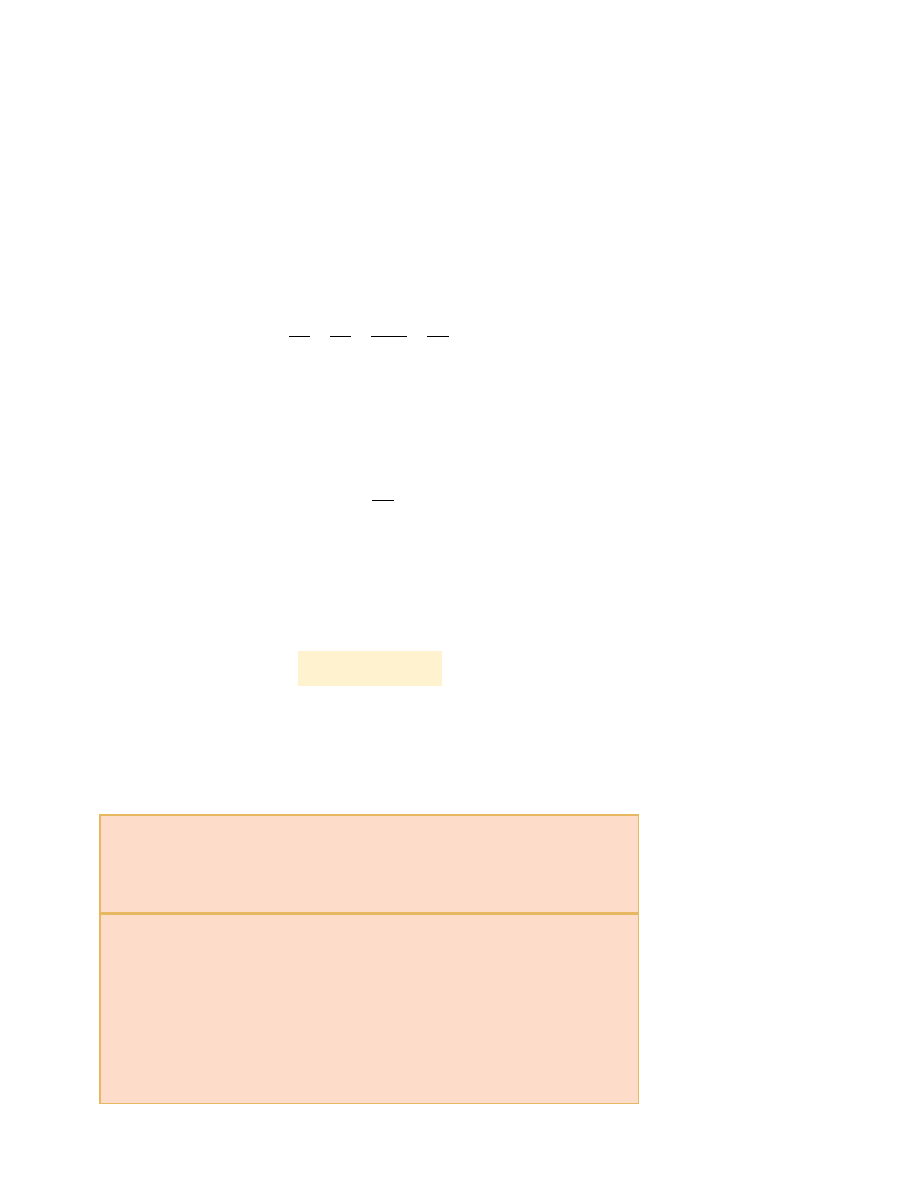Physics For Scientists And Engineers 6E - part 277

incident on the boundary between medium 1 and medium 2. The frequency with
which the waves pass an observer at point B in medium 2 must equal the frequency
at which they pass point A. If this were not the case, then energy would be piling up
at the boundary. Because there is no mechanism for this to occur, the frequency
must be a constant as a light ray passes from one medium into another. Therefore,
because the relationship v ! f ( (Eq. 16.12) must be valid in both media and
because f
1
!
f
2
!
f, we see that
v
1
!
f (
1
and
v
2
!
f (
2
(35.5)
Because v
1
! v
2
, it follows that (
1
! (
2
.
We can obtain a relationship between index of refraction and wavelength by
dividing the first Equation 35.5 by the second and then using Equation 35.4:
(35.6)
This gives
(
1
n
1
!
(
2
n
2
If medium 1 is vacuum, or for all practical purposes air, then n
1
!
1. Hence, it follows
from Equation 35.6 that the index of refraction of any medium can be expressed as the
ratio
(35.7)
where ( is the wavelength of light in vacuum and (
n
is the wavelength of light in
the medium whose index of refraction is n. From Equation 35.7, we see that because
n * 1, (
n
)
(
.
We are now in a position to express Equation 35.3 in an alternative form.
If we replace the v
2
/v
1
term in Equation 35.3 with n
1
/n
2
from Equation 35.6, we
obtain
(35.8)
The experimental discovery of this relationship is usually credited to Willebrord Snell
(1591–1627) and is therefore known as
Snell’s law of refraction. We shall examine
this equation further in Sections 35.6 and 35.9.
n
1
sin &
1
!
n
2
sin &
2
n !
(
(
n
(
1
(
2
!
v
1
v
2
!
c/n
1
c/n
2
!
n
2
n
1
S E C T I O N 3 5 . 5 • Refraction
1105
Snell’s law of refraction
▲
PITFALL PREVENTION
35.3 An Inverse
Relationship
The index of refraction is
inversely proportional to the wave
speed. As the wave speed v
decreases, the index of refraction
n increases. Thus, the higher the
index of refraction of a material,
the more it slows down light from
its speed in vacuum. The more
the light slows down, the more &
2
differs from &
1
in Equation 35.8.
Quick Quiz 35.3
Light passes from a material with index of refraction
1.3 into one with index of refraction 1.2. Compared to the incident ray, the
refracted ray (a) bends toward the normal (b) is undeflected (c) bends away from
the normal.
Quick Quiz 35.4
As light from the Sun enters the atmosphere, it refracts
due to the small difference between the speeds of light in air and in vacuum. The
optical length of the day is defined as the time interval between the instant when the
top of the Sun is just visibly observed above the horizon to the instant at which the top
of the Sun just disappears below the horizon. The geometric length of the day is defined
as the time interval between the instant when a geometric straight line drawn from the
observer to the top of the Sun just clears the horizon to the instant at which this line
just dips below the horizon. Which is longer, (a) the optical length of a day, or
(b) the geometric length of a day?